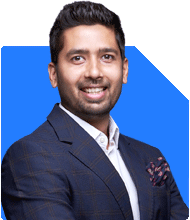I want to invest in mutual funds. Can u suggest which one is the best
Ans: Understanding Mutual Funds
Mutual funds pool money from various investors to invest in diversified assets, managed by professional fund managers. They offer diversification, professional management, and potential for good returns.
Types of Mutual Funds
Mutual funds come in various types, each serving different financial goals and risk appetites.
Equity Mutual Funds
Equity funds primarily invest in stocks. They offer high return potential but come with higher risk. Suitable for long-term goals like retirement or children's education.
Debt Mutual Funds
Debt funds invest in fixed-income instruments like bonds and government securities. They are less risky and suitable for short to medium-term goals like buying a car or planning a vacation.
Hybrid Mutual Funds
Hybrid funds invest in a mix of equity and debt, offering balanced risk and returns. They suit investors seeking moderate risk with a balanced approach.
Sectoral/Thematic Funds
Sectoral funds invest in specific sectors like technology or healthcare. Thematic funds focus on themes like infrastructure or emerging markets. High-risk, high-reward category.
Active vs. Passive Funds
Active funds are managed by fund managers who make decisions to outperform the market. Passive funds track a specific index.
Disadvantages of Index Funds
While index funds have lower fees, they often underperform compared to actively managed funds during market downturns. Active fund managers can make strategic decisions to protect investments.
Benefits of Actively Managed Funds
Active funds leverage fund managers' expertise to navigate market complexities. They can adjust portfolios based on market conditions, offering potential for higher returns and better risk management.
Choosing the Right Mutual Fund
Choosing the right mutual fund requires understanding your financial goals, risk tolerance, and investment horizon.
Assessing Financial Goals
Identify your financial goals: buying a home, children's education, retirement planning, or wealth creation. Align mutual fund selection with these goals.
Understanding Risk Tolerance
Risk tolerance varies among investors. Assess your comfort with market volatility. High-risk tolerance suits equity funds; low-risk tolerance fits debt funds.
Evaluating Investment Horizon
Investment horizon influences fund selection. Short-term goals (1-3 years) align with debt funds; long-term goals (5+ years) align with equity funds.
Regular vs. Direct Funds
Regular funds involve mutual fund distributors (MFDs) and offer advisory services. Direct funds eliminate intermediaries, reducing fees but requiring self-management.
Disadvantages of Direct Funds
Direct funds save on commissions but demand significant time and knowledge. Investors may miss out on expert guidance, impacting returns and risk management.
Benefits of Regular Funds
Regular funds provide access to Certified Financial Planners (CFPs) who offer personalized advice, portfolio management, and regular monitoring. This support can optimize returns and align investments with goals.
Evaluating Fund Performance
Evaluate mutual fund performance by analyzing historical returns, consistency, and comparison with benchmarks and peer funds.
Historical Returns
Review past performance to gauge potential returns. However, past performance doesn't guarantee future results.
Consistency of Returns
Consistency is crucial. A fund with stable returns over various market cycles indicates good management.
Benchmark Comparison
Compare fund performance with relevant benchmarks. Consistent outperformance indicates strong management.
Peer Comparison
Evaluate a fund against its peers. Consistently outperforming peers signals a robust fund.
Importance of Expense Ratio
Expense ratio impacts net returns. Lower ratios are preferable, but consider the services and performance offered by the fund.
Fund Manager's Track Record
The fund manager's experience and track record are vital. A skilled manager can significantly impact fund performance.
Understanding SIP and Lump Sum Investments
Systematic Investment Plan (SIP) and lump sum investments are common ways to invest in mutual funds.
Systematic Investment Plan (SIP)
SIP allows regular, small investments. It offers rupee cost averaging and disciplined investing, reducing market timing risks.
Lump Sum Investment
Lump sum investment involves investing a large amount at once. Suitable for investors with idle cash and knowledge to time the market.
Tax Implications
Understanding tax implications is crucial for maximizing returns and planning withdrawals.
Equity Funds
Equity funds held for over a year attract long-term capital gains tax at 10% on gains exceeding Rs 1 lakh annually. Short-term gains (within a year) are taxed at 15%.
Debt Funds
Debt funds held for over three years attract long-term capital gains tax at 20% with indexation benefits. Short-term gains are taxed as per the investor's income tax slab.
Asset Allocation and Diversification
Effective asset allocation and diversification reduce risk and enhance returns.
Asset Allocation
Divide investments across asset classes based on risk tolerance and goals. A balanced mix of equity, debt, and hybrid funds can optimize returns.
Diversification
Diversify within each asset class to spread risk. Invest in different sectors, themes, and geographies to mitigate specific risks.
Monitoring and Rebalancing
Regularly monitor your investments and rebalance your portfolio to maintain desired asset allocation and align with goals.
Monitoring
Review fund performance, portfolio alignment with goals, and market conditions periodically.
Rebalancing
Adjust investments to maintain target asset allocation. Rebalancing involves selling overperforming assets and buying underperforming ones.
Importance of a Certified Financial Planner
Engaging a Certified Financial Planner (CFP) offers expert guidance, personalized advice, and ongoing support.
Expert Guidance
CFPs provide professional expertise in financial planning, investment strategies, and market analysis.
Personalized Advice
CFPs tailor investment recommendations to individual goals, risk tolerance, and financial situation.
Ongoing Support
CFPs offer continuous support, portfolio reviews, and adjustments to align with changing financial goals and market conditions.
Avoiding Common Mistakes
Avoid common investment mistakes to safeguard your wealth and optimize returns.
Chasing Past Performance
Don't rely solely on past performance. Market conditions change, and top-performing funds may not always sustain returns.
Ignoring Risk
Understand and accept the inherent risks in mutual fund investments. Choose funds aligning with your risk tolerance.
Lack of Diversification
Avoid concentrating investments in a single fund or asset class. Diversify to spread risk.
Emotional Investing
Don't let emotions drive investment decisions. Stick to your financial plan and avoid impulsive actions.
Considering Your Financial Situation
Evaluate your current financial situation, including income, expenses, liabilities, and existing investments. This helps determine how much you can invest and in which types of funds.
Evaluating Existing Investments
If you hold LIC, ULIP, or investment-cum-insurance policies, consider surrendering them and reinvesting in mutual funds. These products often have high charges and lower returns compared to mutual funds.
Importance of Financial Education
Continuous financial education empowers you to make informed investment decisions.
Staying Updated
Keep abreast of market trends, economic changes, and new investment opportunities. Knowledge enhances decision-making.
Attending Workshops
Participate in financial workshops and seminars. They provide valuable insights and updates on investment strategies and market outlooks.
Final Insights
Investing in mutual funds is a strategic way to grow wealth and achieve financial goals. Understanding different types of funds, assessing your financial situation, and aligning investments with your goals and risk tolerance are crucial steps. Engaging a Certified Financial Planner offers professional guidance, personalized advice, and ongoing support, optimizing your investment journey. Avoid common mistakes, stay educated, and regularly monitor and rebalance your portfolio to ensure it remains aligned with your objectives.
Best Regards,
K. Ramalingam, MBA, CFP,
Chief Financial Planner,
www.holisticinvestment.in





























